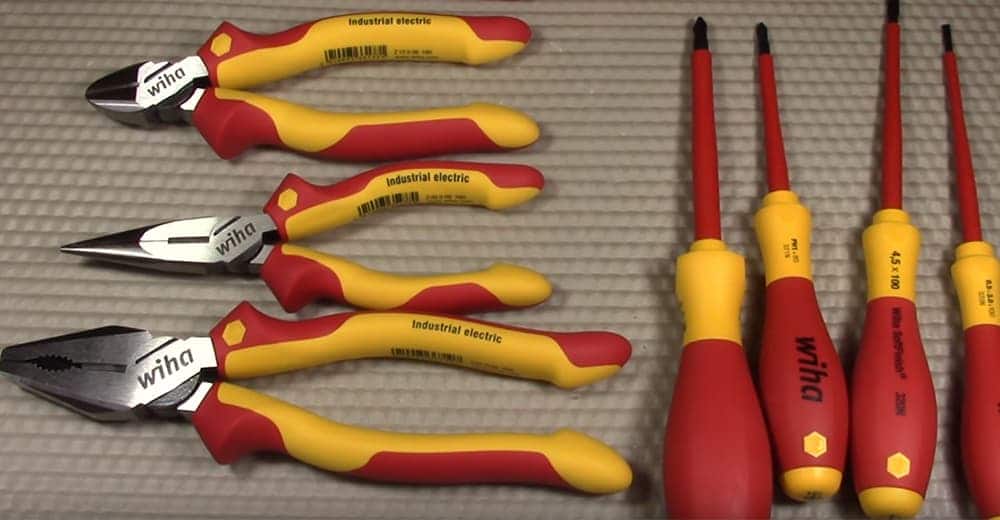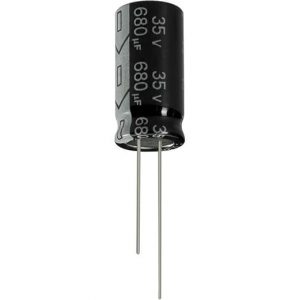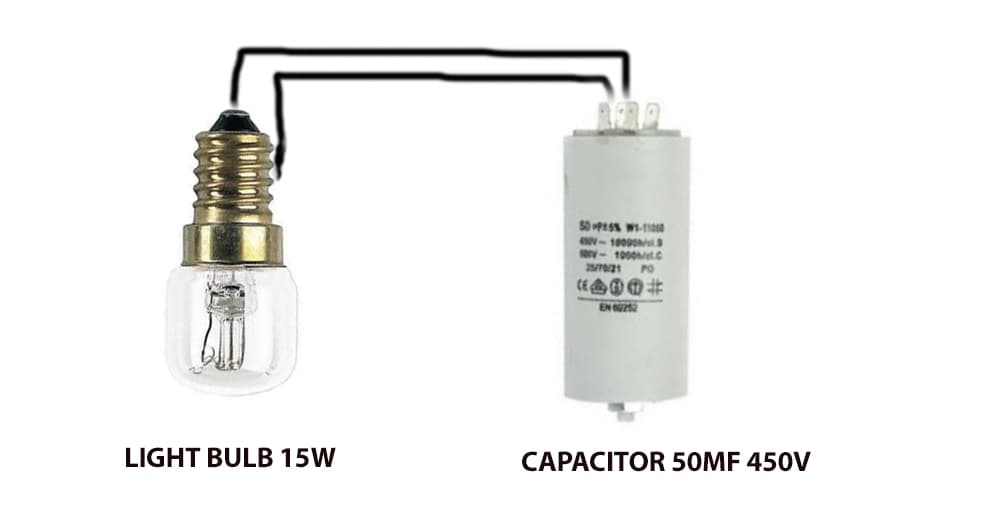I don’t want to sound boring, however, before starting this tutorial I would like to refresh your memory on some physics, and below is a little bit of a theory.
Capacitor is a device made up of two metallic plates separated by insulating material. It is an electric and electronic component that stores electrical energy during power surges and releases it back to the circuit when the circuit voltage drops below the capacitor’s voltage value. When the circuit voltage drops, capacitors may regulate the voltage of the circuit until they get total or partially discharged.
It’s a common knowledge, that a capacitor can still hold an electrical charge long after a device is powered off. The larger the capacitor, the more charge it may store. Handling capacitors with big voltage values (especially above 100V and with high capacitance) may be dangerous if some protective and safety measures are not taken. Therefore, to avoid any unexpected danger and/or shock hazard to anyone, who might service the device, all the capacitors should be discharged prior to any operation.
In order to measure the capacitance value, the capacitor has to be removed from the circuit and discharged. After that a multimeter can be used to measure its capacitance. If the value of the reading is 0 F, it may imply that the capacitor is broken. However, if you want to know the current operating Voltage of the capacitor, there is no need to remove it from the circuit.
When does the necessity to discharge a capacitor arise?
It’s necessary to discharge any capacitor that needs to be serviced, no matter if is found in a circuit or as a spare part.
What safety precautions should be taken?
Make sure to take some safety precautions when you are working around capacitors or you need to discharge them. You will need to have insulated electric screwdrivers, safety gloves and electrical safety glasses.

Electric Insulated screwdrivers and pliers

The screwdrivers for electrical use have marking for the maximum voltage to be used for safety reasons.
How to discharge a capacitor in the most safely way
In this tutorial I’m going to show you several ways to discharge a capacitor.
1. Discharging the capacitor with a screwdriver
You might have heard that one of the simplest ways to discharge the capacitor is by shorting its terminals, using a screwdriver or pliers. Actually, most technicians would place either pliers or a screwdriver between the two terminals of the capacitor and the work is done. This method works perfectly well only for capacitors used in electronics of some micro farads and below 10 V.
To avoid any problems while discharging any capacitor, do it in a technically correct way: before using the screwdriver, use a multimeter to know the stored electric charge of a capacitor.
- Start with a setting up a multimeter to the highest DC voltage setting.
- Connect the leads of the capacitor to the multimeter probes.
- Hold the probes and read the numbers in the multimeter display.
Or you can connect both leads of the capacitor together, as it is shown in the picture below:

Remember, it can be done for low voltage capacitors. If the multimeter readings are below 50V, you may discharge the capacitor with a screwdriver or short circuit it.
- Take an insulated screwdriver in one hand and the capacitor in the other.
Note: Make sure the insulation of the screwdriver handle is not damaged: there should not be any visible misshapes, cracks, holes, or tear in plastic or rubber. Never use a screwdriver with a broken handle for any electrical works.
- Place the screwdriver across the both leads of the capacitor.
- There will be a spark. It means that the electric discharge is in progress.
Note: In case the charge of the capacitor is more than 50V, you may witness a heavy spark, which is very dangerous and may lead to the potential injury to your eyes and face; moreover, the tip of the screwdriver can melt.
- Using the multimeter, check again the stored charge of the capacitor. If you’ve done everything properly, by that moment the capacitor should be totally discharged: you will see zero voltage in the multimeter.
Protective personal equipment it is always advisable, but may not be needed for small voltages (below 10V)
2. Discharging the capacitor with a 15-watt electric light bulb

Hight voltage capacitors should be discharged by using of a safe capacitor discharge tool. And one of them is a simple circuit using a wire and a light bulb (values 15W to 90W at the user’s convenience).
- Start with a setting up a multimeter to the highest DC voltage setting.
- Connect the leads of the capacitor to the multimeter probes.
- Hold the probes and read the numbers in the multimeter display.
Note: If the capacitor’s stored voltage is higher than 50V, you have to discharge the it with a safe tool. Don’t even try to do so with a screwdriver as described above. You may have a severe injury during the process, damage the capacitor and even a screwdriver.
- Take a discharge bulb in one hand and the capacitor in the other.
- Place the leads of the bulb on the leads of the capacitor and hold them.
- The light bulb will illuminate. It means that the capacitor contains a charge and electric discharge is in progress.
- When the light bulb is off, disconnect it from the leads of the capacitor.
- Using the multimeter, check again the stored charge of the capacitor. If you’ve done everything properly, by that moment the capacitor should be totally discharged: you will see zero voltage in the multimeter.
3. Discharging the capacitor with a resistor
Another safe way to discharge a capacitor is through a load, usually a high-voltage resistor. You may use 2.2k ohm 10-watt resistor.
- Start with a setting up a multimeter to the highest DC voltage setting.
- Connect the leads of the capacitor to the multimeter probes.
- Hold the probes and read the numbers in the multimeter display.
Don’t even try to do so with a screwdriver as described above. You may have a severe injury during the process, damage the capacitor and even a screwdriver.
- Take an insulated pliers to hold a high-voltage resistor in the middle. Do not touch the resistor as it may get very hot during the discharge of the capacitor.
- Place the terminals of the high-voltage resistor across the leads of the capacitor. Make sure you don’t touch any metal part with your bare hands otherwise you will get a severe injury (electrical shock).
- In a short time check the voltage: you need to know if the capacitor still holds any charge. For that again connect the two probes of the multimeter to the terminals of the capacitor. If the terminal is showing zero voltage, the capacitor is completely discharged.
Is it possible that a capacitor will discharge on its own?
Of course, eventually, a capacitor will discharge on its own, provided it has been disconnected from any external power or any other charging device (internal battery, for instance).